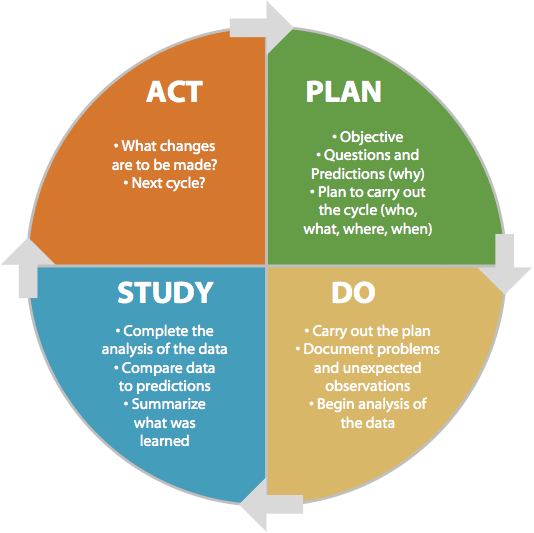In this article, Director of Technology Services, Nathan Mielke, walks you through how his team at Hartford Union High School (HUHS) have adopted an attitude of continuous improvement to transform IT service delivery at the school and have pushed end-user approval over and above 90%!
IT can sometimes be the redheaded stepchild of an organization – with all apologies to the redheaded stepchildren of the world. Connections can never be fast enough. Applications never provide all the functionality users want. There are multiple requirements to be met, and folks all want you to deal with theirs first. Everything your average organization does runs on the cabling and systems your team provides. When everyone’s using it, the likelihood of meeting every need is a tough one, no doubt. Oh, and folks like to call you a techie, which I’ve never cared for.
While it’s a challenge to meet the IT demands of the modern organization, it’s not impossible. Success in any organization or unit is no accident. It takes a lot of work and focus, but proper structures for support help to make that pivot to effectiveness. At Hartford, we’ve been working to improve IT services through Lean Management principles, where support to our clients (students, staff, and parents) is our value stream. Now before I share the results of a recent student engagement survey to show you how things have changed, I need to explain where we were before we started.
Waste, waste, waste
Five years ago waste was rampant in this value stream. The ticketing system was underused. Tickets sat in the system with no resolution or even movement toward a resolution. In my first year in the organization, the average ticket resolution time was 96 working hours!

This Wisconsin manufacturer needed to modernize its IT infrastructure to support rapid business growth.
Discover what they didThere was no cross training between IT staff members. If one person was out, there was no support for some applications, such as Moodle, our chosen learning management system. No one knew anything about the firewall configuration and knowledge of the filtering solution was weak. The state of the network resulted in unacceptable amounts of downtime, and the antiquated wireless system was hit and miss on a daily basis.
Staff members couldn’t do their job, and the move to Google Apps was floundering because all too often simple tasks like opening and writing in a Google Doc was painfully slow.
Setting expectations, making changes
We focused on cutting waste and setting support standards. Starting in 2014 expectations were set for first responses to tickets and ticket resolution time. These were internal benchmarks that the department was expected to meet and school district leaders were told that these were our expectations for service.
I should point out that it helps to work out an internal Service Level Agreement with your colleagues. The benchmarks – 90 minutes for a first response to a ticket and not exceeding 40 work hours to resolve a ticket – were created based on conversations with other districts that track this kind of data. Being one building/one district, our expectations were different from those of a school district with multiple buildings.
These expectations have driven down ticket resolution times over 70%.
| 2013-14 | 2014-15 | 2015-16 | 2016-17 | |
| Average ticket resolution time | 96 hrs | 21 hrs | 32 hrs | 26 hrs |
| First response to tickets | 3 hrs 30 mins | 1 hr 4 mins | 1 hr 1 min | 1 hr 7 mins |
Get help when you need it
An essential part of continuous improvement is the consistent partnership with senior-level network administrators from partner organizations. Whether you’re a school district or not, you need a “phone a friend” lifeline when issues stretch your team’s knowledge. That partnership needs to be built over the years with support to help optimize your infrastructure.
In our case, the network configuration didn’t follow best practices, performance was sluggish and from a hardware standpoint, the infrastructure was rotting with an aging SAN and lots of 10/100 switches that couldn’t take advantage of our over 500Mbps internet connection. Having that external lifeline has made all the difference over four full years.
The turn around has been very noticeable from a customer point of view. One teacher (yes, they are a customer of ours) stopped me this year to say “I never have to think about our wireless working in my classroom. It’s always there, and I don’t think we take enough time to notice things like that…thanks!”
That’s the kind of thing that makes it all worthwhile.
Avoid the latest models
[x_pullquote type=”right”]The latest convertible tablet loaded with everything but the kitchen sink might look like a snappy solution, but it’s going to lead to problems.[/x_pullquote]Another strategy has been purchasing only time-tested hardware solutions. We’re dealing with students, so “stuff happens” and you need a device that can handle the load and a partner who can turn around accidental damage protection services. Since we have moved to purchasing strictly Lenovo devices for students, we’ve had fewer issues with the resilience of devices. The latest convertible tablet loaded with everything but the kitchen sink might look like a snappy solution, but it’s going to lead to problems. Schools are unlike other production environments and not even close to what a manufacturer is going to try and simulate in a lab. I can guarantee you a surge in tickets on a first gen product line as you help the manufacturer work out the kinks in their design.
Yes, this costs money – both in terms of hardware costs and people time, but the value you need to help others understand is the lost learning/work time this helps prevent. If we had continued to try to cobble together what we had, it wouldn’t have taken long before we faced a complete meltdown of our systems and processes.
The impact of continuous improvement on IT service delivery
Okay, getting back to the survey data:
- Our department had the highest approval rating for communication
- Over 94% of staff members have the technology they need to do their job
- Over 93% of staff member have the support they need to do their job.
Based on the survey company’s work with other districts, overall we score above the average school technology department. The owner of the company who conducted the survey took time out in an open board of education meeting to call out the positive feedback for our department.
What’s next?

Further improvements – how do we meet the needs of the folks who aren’t satisfied? It’s a copout to say that you’ll never meet some needs – we need to keep trying.
For the coming school year, I’m looking at ways we can better connect with folks where they’re working to get a better sense of what they may need to make their life easier, or what they don’t know they need to make their life easier.
This school year as a department we will engage in a Plan – Do – Study – Act framework to solve problems. ‘Connecting’ is one of those things we’ll be addressing and we plan on finding time to be involved in more department meetings and taking time to observe the great learning experiences our students are having in class.
Stay tuned; we’ll check back soon to let you know how we’re doing.



